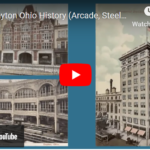Due to Ohio’s stay at home order, Sinclair has been shut down for multiple weeks and all instruction has moved online for the rest of the Spring semester.
This has put us librarians in an interesting position as we are now working from home and trying to support students (as well as faculty and staff) as best as we can.
Fortunately many of the ways in which Sinclair folks interact with library resources are already completely online—ebooks, article databases, class guides and research tutorials, etc.
And much of our research assistance has always been virtual as well, mainly through chat and email. But moving to a completely remote setup has come with challenges, and it’s certainly a new experience to be working without a physical space or any form of print lending.
One thing I’ve been working on is a series of videos for faculty to use in their online classes. Some are meant to replace the in-person research workshops or “library one shots” that I do throughout the academic year.
But others are meant to be shorter videos on a specific form of information use and research, helpful to both Sinclair students as well as the general public.
One of those I just finished was on the recently hot topic of media literacy and “avoiding fake news,” where I go over some key habits to develop for recognizing fake news and verifying credibility.
Here’s the video on YouTube (and I plan to record more of these if you want to subscribe to my channel!):
You can also read my reflections on how I approach teaching fake news here.




Leave a Reply